From French "diamonds" to French "Christie"
And a graphic example of this is the history of French tank building. And the "trailer on the tracks" - the tank "Schneider" SA.A. 1, and the real carriage "Saint-Chamonix" - in fact, were anything but tanks. But the first real tank was also created by the French and wiped the nose of the British - this is the famous Renault FT-17. This tank had a lot of flaws, didn’t criticize it, except that only the laziest, but he fought and, by the way, could fight even now. Everything is exactly the same as with our T-34 tank - that's what an interesting fate for masterpieces. People want even more perfection, but is it at all achievable, I would like to know?
But back to the French ... Having created their own "cars" on the chassis of the Holt tractor, they became convinced that this was a dead end and turned to the experience of their British colleagues. The French Saint-Chamond once again offered its French “rhomboid”. He received the name "Saint-Chamond - 25-ton" and he was very similar in design to the British tanks Mk. But ... the French decided to put a cannon between the tracks, and machine-gun sponsons to place in pairs in a checkerboard pattern, so as to increase the density of fire. Probably, their project would be interesting in its own way, if it were embodied in metal, but was it worth doing it for the sake of ... what? To put one 75-mm 1897-mm cannon on it, firing directly along the course between the tracks?
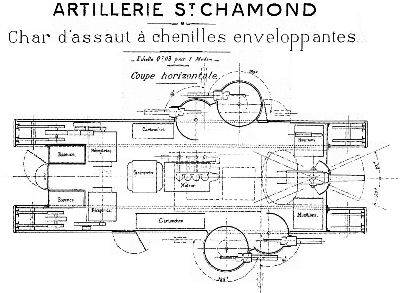
The projection "Saint-Chamon 25 tons" (top view)
The fact is that the tank did not shine with its other characteristics. So, its weight, contrary to its name, was approaching (according to the project!) Tons of 36! He had the same drive as the actual “Saint-Chamon” - that is, the 120-strong engine rotated the generator, which fed two electric motors, one for each track. The thickness of the frontal and armor sides was to be 16 mm, the bottom and the roof - 5,4 mm. Target angles - 23 ° in both directions for the gun, and 180 ° for each pair of machine guns. Ammunition - 100 shells and 16000 cartridges. Speed - 4,5 km / h, that is, in this regard, the tank did not exceed the British cars.
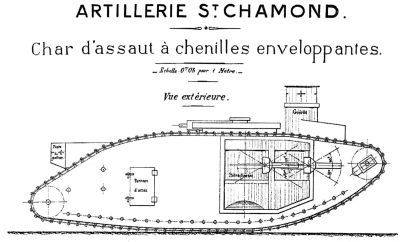
The projection of the tank "Saint-Chamon 25 tons" (side view)
An interesting feature of the tank was the tower for the driver with cross-shaped viewing slots. It was located in it, being above the gun. Interestingly, the British decided to do almost the same tank, only simpler, also with one gun in the front, but only with two machine guns on the sides - the Mk.VI. This tank reached the stage of a wooden layout, but also did not see the light. Nor was the French “rhomboid” built.
It remained the pinnacle of the French tank design small FT-17, and neither its competitor, the Peugeot reckless tank with a short 75-mm cannon, nor an ACS with the same position of the 75-mm cannon in the nose, based on the same FT, the light never saw.
But for the tank 2, the French made an excellent three-seater turret with an 75-mm special tank gun and a stroboscope for observation! Oh, this strobe at the time was just a miracle of technology, as simple as technically perfect. Two cylinders with narrow vertical slits one in the other and a cylinder of bulletproof glass - that's all, not counting their drive. When metal cylinders rotated at high speed in opposite directions, their walls seemed to disappear, “dissolve” and the person inside could see everything almost as well as if he had watched, his head out of the hatch!
Now they would guess to unify the tower from this heavy tank with the undercarriage of the middle one, and the French would have a heavy tank and an average tank with the same turrets, and the rear tower from 2C could go to the reconnaissance tank. But ... the French military and engineers for some reason could not think of such an obvious and simple solution. Instead of a triple tower, they made it double, and this was their fatal mistake. The towers for two people turned out very close. They could put a gun in 47-mm - good for 30-s, but absolutely nothing that meant anything during the war years! Our T-34 also had a twin tower at first. But ... he had a 76,2-mm gun in it! And there was a reserve for increasing the mass, which allowed the third person to plant in it and increase the caliber of the gun. But the French, this track was closed.
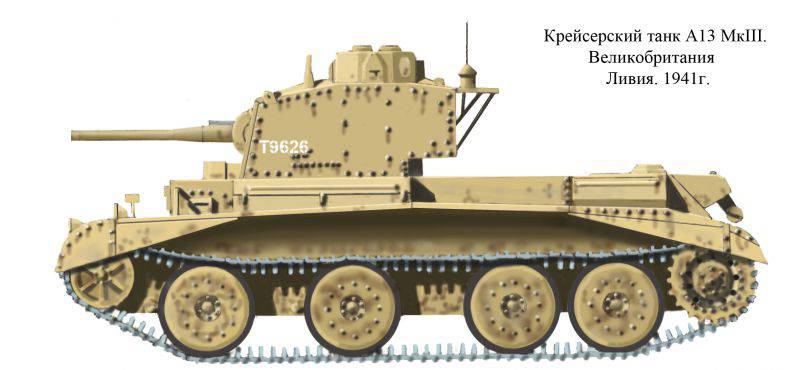
The first "English Christie tank" A13 MkIII retained the original chassis, but was purely tracked vehicle.
True, they were smart enough to also buy a Christie tank (which the British and we did before them) and make it almost the best “foreign Christie” of those years. That's just on the battlefield, these machines did not have time! The British began with the fact that it was slightly modified and launched into serial production under the brand name A13, and in a purely tracked version. Subsequently, on the basis of his chassis were created such tanks as "Covenanter", "Kruseyder", "Cromwell", "Center" and "Comet" - that is, it was all, absolutely all the so-called "cruising" tanks of the British army during the Second World War war! In the USSR, the wheel-tracked propulsion was initially retained, but with an increase in the weight of the machines they refused in favor of the purely tracked one.
In this regard, the French were more “original”, or they had more pride and stupid vanity, because they also acquired Christie’s tank, they were clearly in no hurry to adopt it. As a result, the “French Christie”, unlike the Soviet and English, were late for the war, although the design of the Muline’s engineers turned out to be very original. It was assumed that this new tank should become a prototype for the “cavalry tank”, which will have to replace the medium tanks S-35 and S-40. It would seem that they were good cars, but they did not suit the engineers and the military, primarily because they had low speed, and the reservation, although very solid for such cars, was considered not rational enough! Therefore, the French decided to break forever with the old methods of designing tanks, and to develop such a tank that would combine all imaginable advantages and even unimaginable advantages, that is, the real “car of tomorrow”!
For the first time in the history of French tank building, the running gear of the tank should consist of four rollers with a diameter of 82 cm on each side - a kind of know-how, which later became characteristic of many post-war tanks launched in France. At the same time, the undercarriage device was thought out in such a way that it allowed the car to continue moving with the loss of one of the tracks and, accordingly, like in Christie’s tanks, it could move without them at all.
The armor parts of the hull and turret in the best traditions of French tank building were molded and positioned so rationally that the crew and the mechanisms behind them literally “flowed around”. The thickness of the frontal armor reached the 60 mm (i.e. was greater than that of the T-34), the airborne 30-50 mm, and the stern armor's 40 mm.
The fuel tanks were located above the chassis, and since the new tank, which received the AMX-40 brand, had to be equipped with a diesel engine with an HP 160 power, then the fuel for it was “heavy” and therefore not as fire hazardous as traditional gasoline. The engine size was also significantly less than that of the S-35 tank engine (190 hp) and S-40 (220 hp), which made its weight (about 20 t) almost the same as with these cars, but with an incomparably stronger booking! An interesting solution was the easily raised upper armor plate over the engine compartment, made on the principle of a car hood. It could easily be raised, put up a special backup and work with convenience.
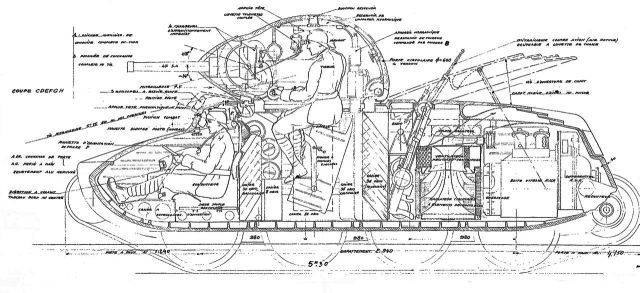
АМХ-40 - general section (graphics)
In the turret of the new tank were placed two crew members - the commander and loader, and for the first time in the history of the tank design it acquired an egg shape and was very similar to the towers of later Soviet vehicles - such as the T-54 and T-55. Having designed it, the French designers proved that when they need to, they know how to abandon stereotypes and really make something completely new.
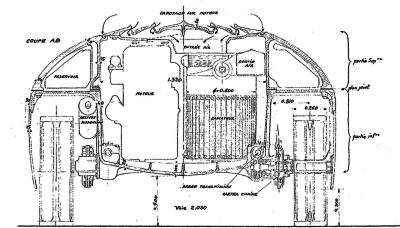
AMX-40 - section of the engine compartment.
Access to the tank was through a round hatch with a diameter of 60 cm at the rear of the tower. Another hatch was on her “top” and could also serve for entry and exit, although this was disturbed by the panoramic periscope located in his center. Thus, the tower had no protruding elements, with the exception of two armored caps of the rangefinder, since even the upper periscope in the hatch was made to retract inside. In general, it was a good design, only the presence of only one surveillance device presented a certain danger. To lose him in battle for the tank commander meant to sharply narrow his field of vision, since now he could only watch the battlefield through a gun sight, even if combined with a range finder.
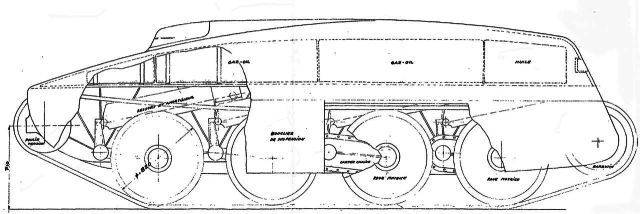
AMX-40 - Chassis.
The armament of the tank (and this was, perhaps, its main drawback) consisted of the same X-NUMX-mm SA-47 cannon, which was also mounted on the S-35 and S-35 tanks. Auxiliary served two machine gun "Chatellerault" caliber 40-mm. One of them was traditionally paired with a gun, but the second one - well, I had to think of such a thing! - the second was placed in a special compartment inside the building immediately behind the tower. If necessary, it could be removed, installed on a special bracket and fired at aircraft. Something like the Germans subsequently installed on the stern of their self-propelled guns "Yagdtigr", only on it the machine gun for anti-aircraft firing into the hull in the stowed position was not removed. Although the barrel of the machine gun protruded outside, he himself was protected from the effects of enemy fire and was also always at hand, because the tower hatch was located next to it. Ammunition for the gun consisted of 7,5 projectiles, that is, was doubled compared with the previous tanks!
The driver of the tank took place along the axis, and the panel with control devices was behind the steering wheel. That is, the layout was as close as possible to the automotive. On both sides of its place were shelves for storing ammunition, which facilitated access from the crew compartment.
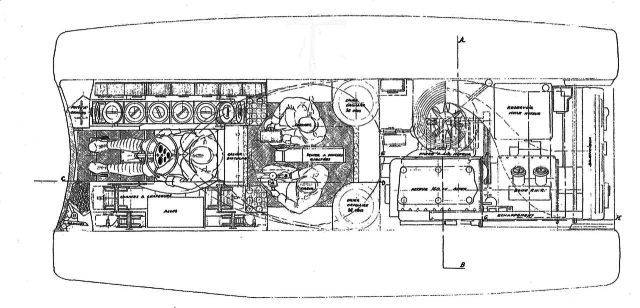
AMX-40 - top view
It should be noted that the AMX-40 was also slightly shorter and less high than the S-35, although their total weight and dimensions were almost the same. This suggests a high weight culture of the new model. As a potential successor to the old cars, he could have become even better if he had a 75-mm cannon on it, comparable in performance to the T-34, or, say, the American Sherman. After all, they led their ancestry from the French gun of the 1897 model of the year, which is why American tanks in France easily fired it with projectiles even in the 1944 year. But, nevertheless, this was not done even in the drawings. The new tank remained on paper, and then came the “hot May” of 1940, and France was not up to developing new tanks, but remained to use what is!
Color drawings by A. Sheps
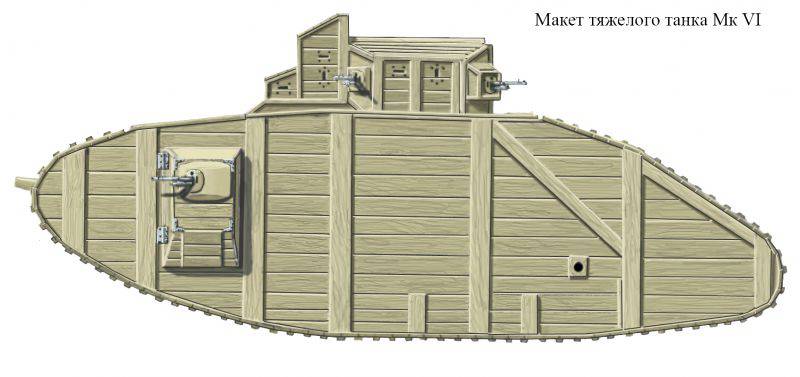
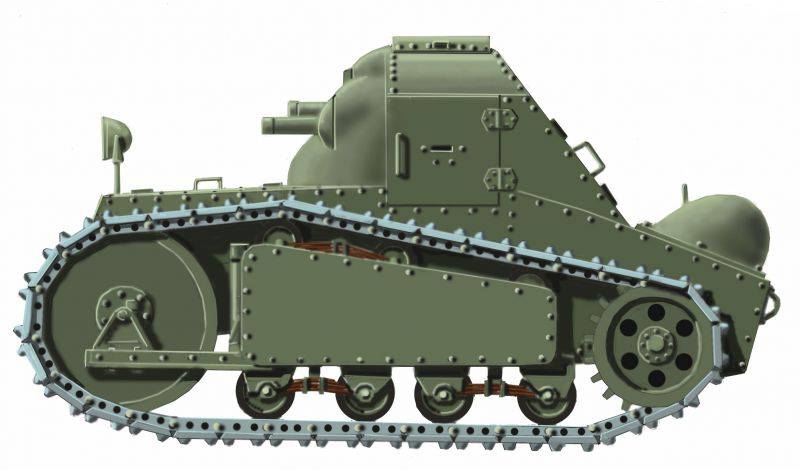
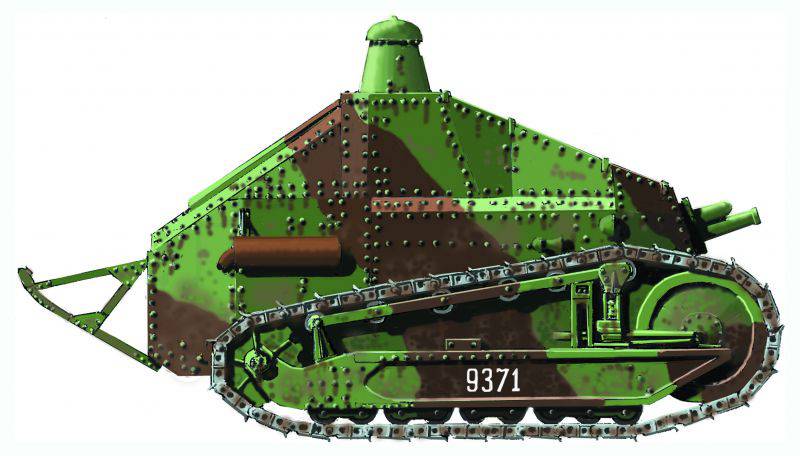
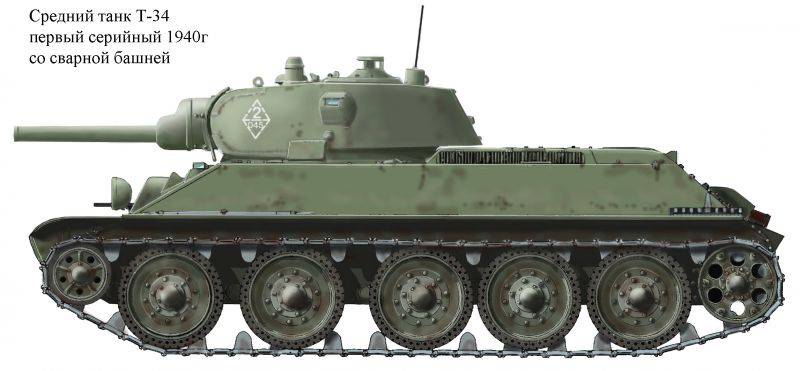
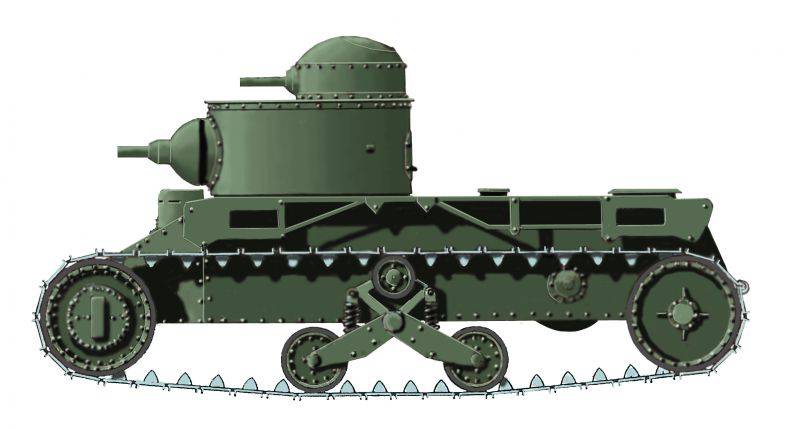
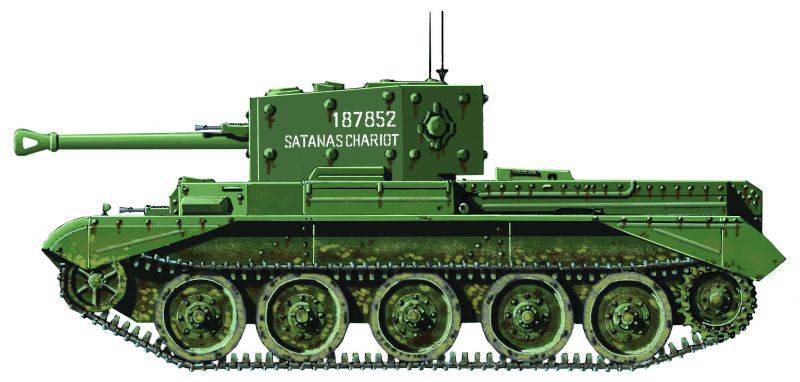
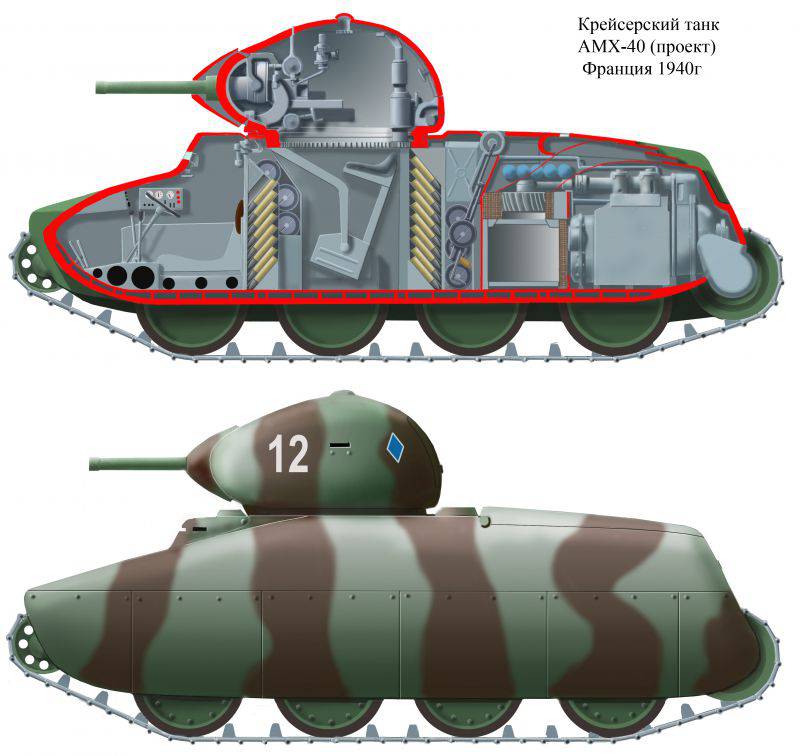
Information